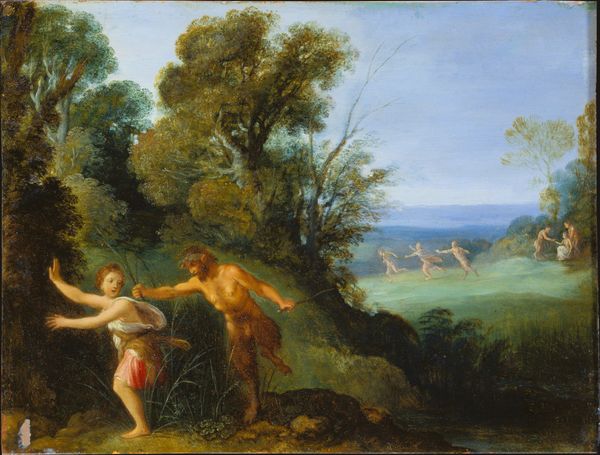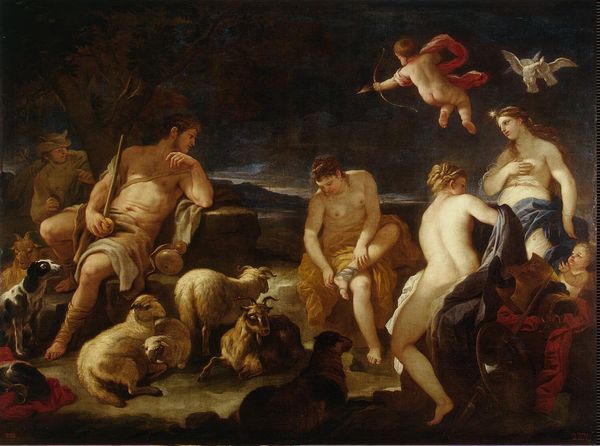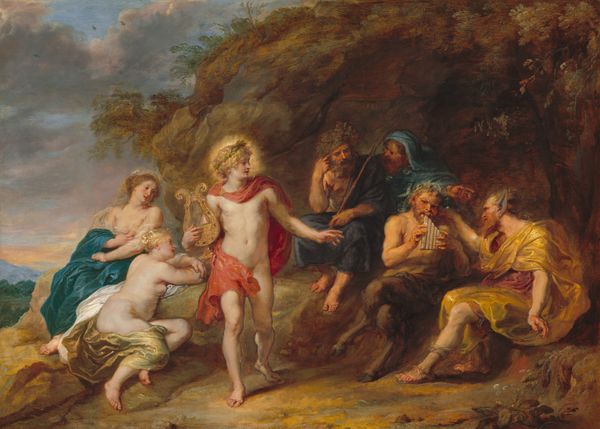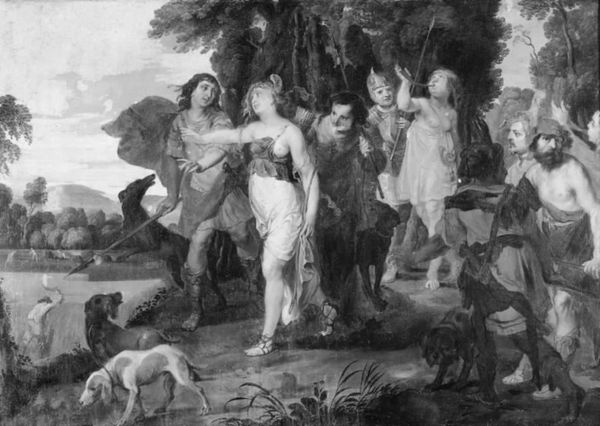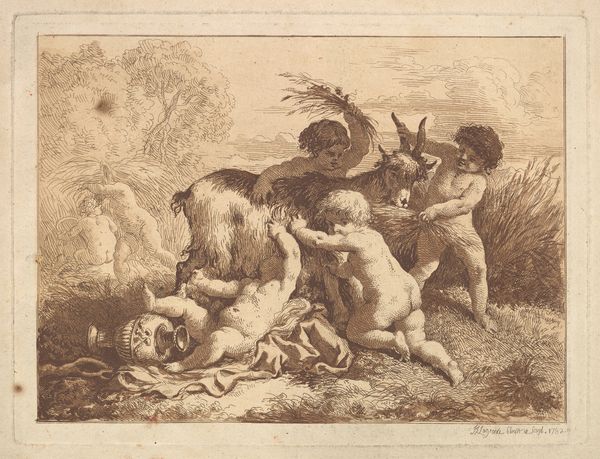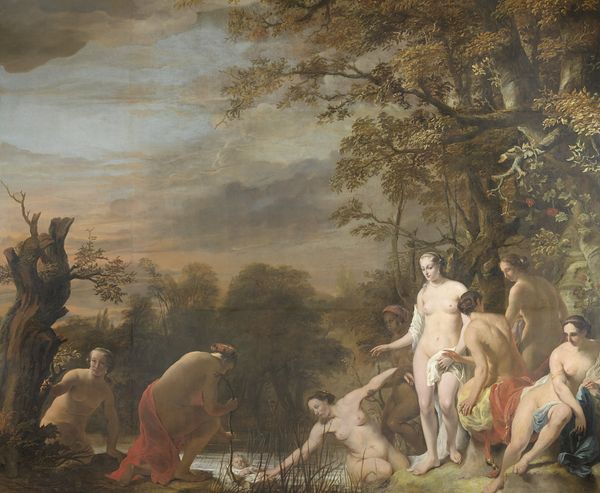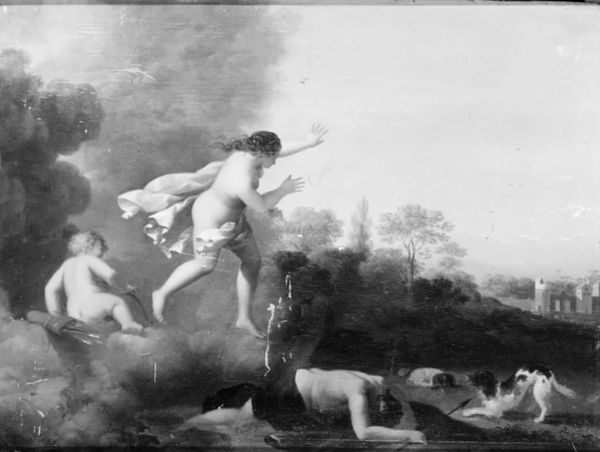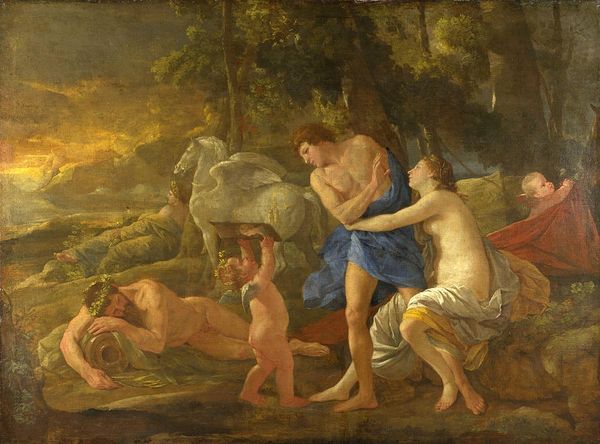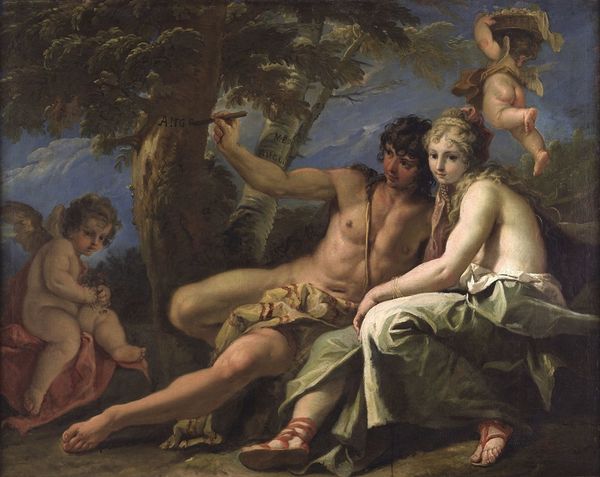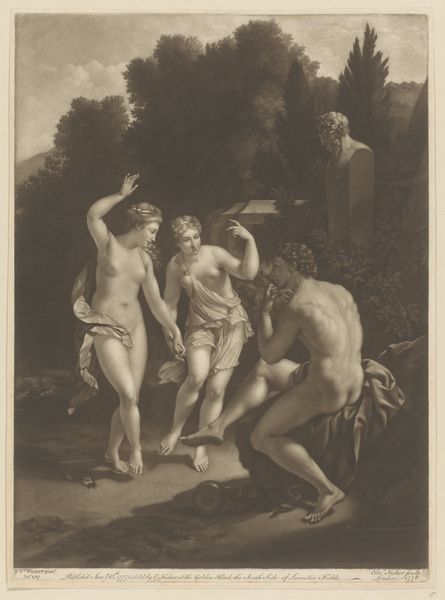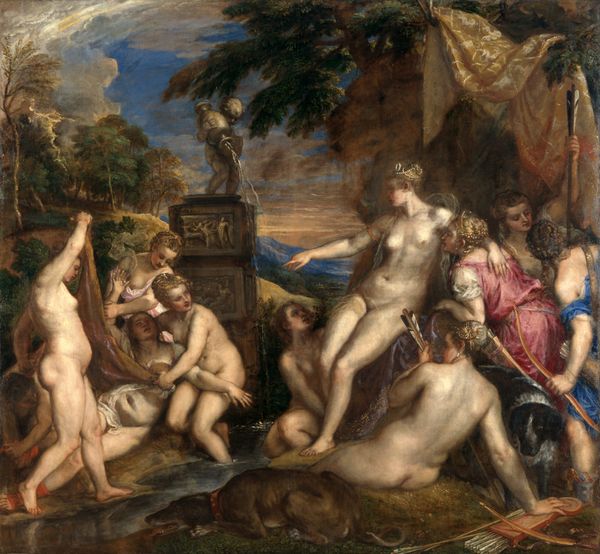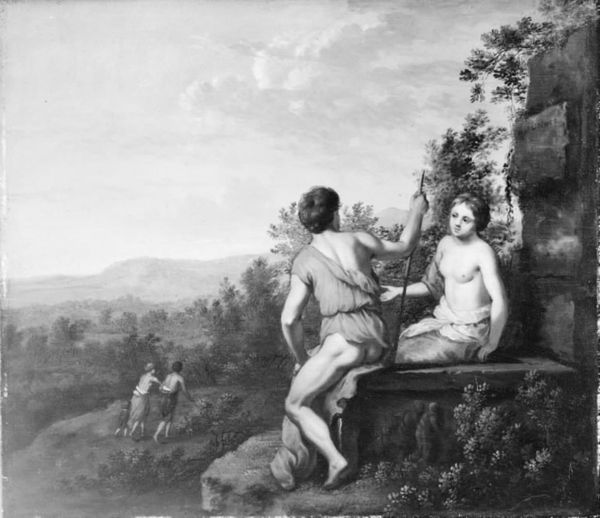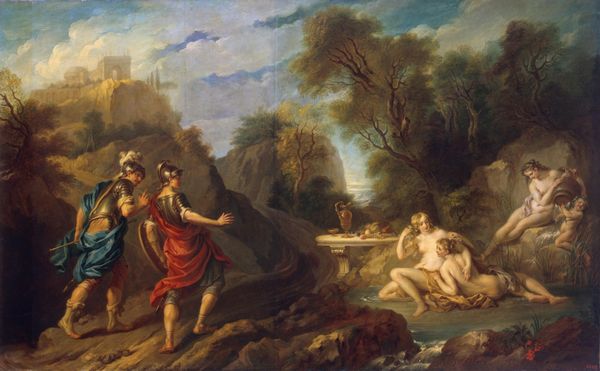
oil-paint
#
baroque
#
oil-paint
#
landscape
#
figuration
#
oil painting
#
history-painting
#
nude
Dimensions: support height 29.8 cm, support width 38.4 cm
Copyright: Rijks Museum: Open Domain
Editor: We’re looking at "The Expulsion from Paradise," painted by Cornelis van Poelenburch after 1646. It's an oil painting. I’m immediately struck by the contrast between the idyllic landscape and the figures of Adam and Eve; they appear almost awkward in this otherwise harmonious scene. How do you read this composition? Curator: Initially, observe the spatial organization. Poelenburch establishes a clear division between the celestial and terrestrial realms. The angelic figures, rendered with delicate brushstrokes, occupy the upper left, their presence ethereal and dreamlike. Adam and Eve, however, are grounded, their figures delineated with a precise realism that anchors them firmly within the physical landscape. Editor: So, it's the contrast in styles between different areas of the piece? Curator: Precisely. Notice the landscape's role. The cool tonality in the distance is juxtaposed with a lighter and warmer foreground that is given dimension by an impasto of rich dark-greens. This creates a subtle sense of depth and also compartmentalizes each feature and plane. How does it feel, knowing you know that each space has been rendered this way, in an attempt to further compartmentalize it? Editor: I feel it adds this overall dramatic moment, but also that is lacks in an emotional connection, at least on the painter's part, towards the two figures being exiled. The composition directs us away from them towards the soft idyllic rolling hills in the background. Curator: An astute observation. The formal elements—color, line, composition—function together to create a visual hierarchy. What, then, do you see as the painting’s thematic concern? Editor: I now see it is more concerned about nature and divinity and, while unfortunate for them, it doesn't dwell on their struggles but the paradise they once had. Thanks to your structural reading of the piece I definitely came to that realisation, before I just assumed it had to be Adam and Eve since that's the subject matter of the piece. Curator: Indeed. Examining the internal mechanics of the painting reveals the conceptual intention and its engagement with the viewers experience.
Comments
rijksmuseum about 2 years ago
⋮
Although God forbade Adam and Eve to eat the fruit of the ‘tree of the knowledge of good and evil’, they did so anyway. As punishment, they were driven out of Paradise by an angel with a flaming sword. They fled into the barren mountain landscape. Van Poelenburch, after returning to the Netherlands from Italy, produced this type of highly refined, painstakingly painted landscape throughout the rest of his career.
Join the conversation
Join millions of artists and users on Artera today and experience the ultimate creative platform.
